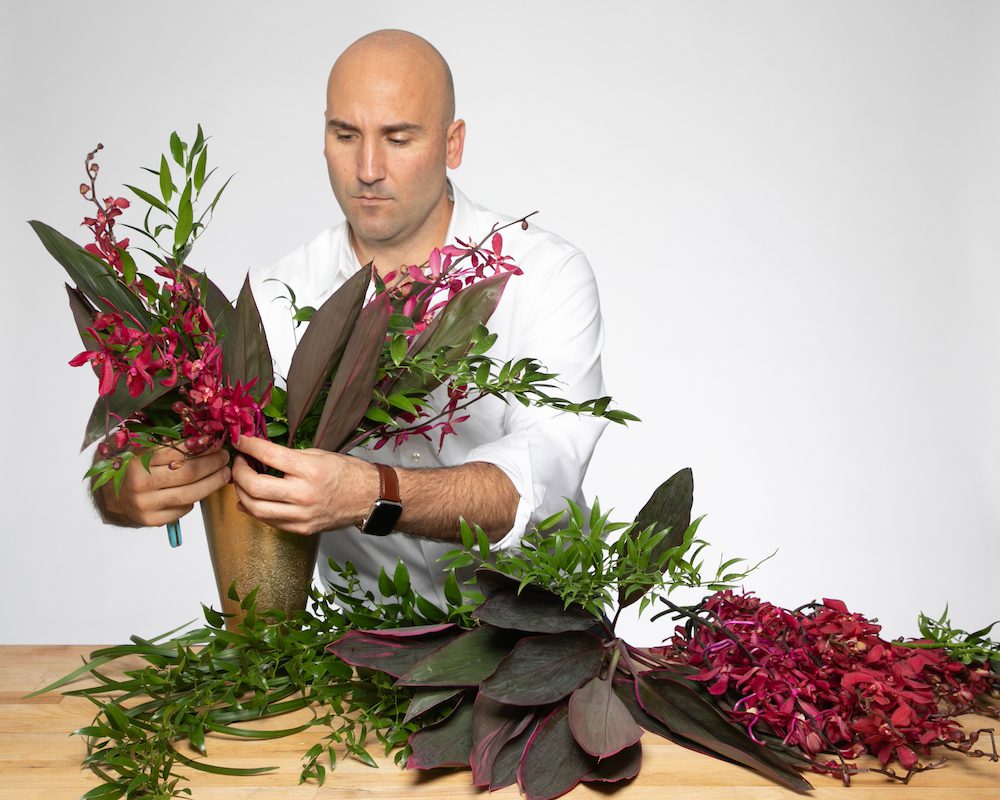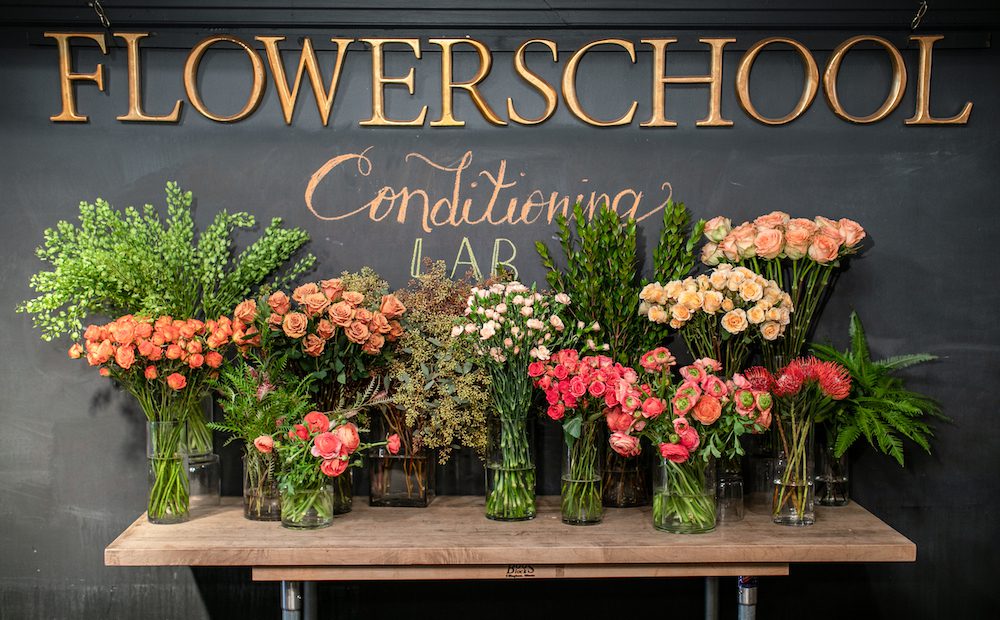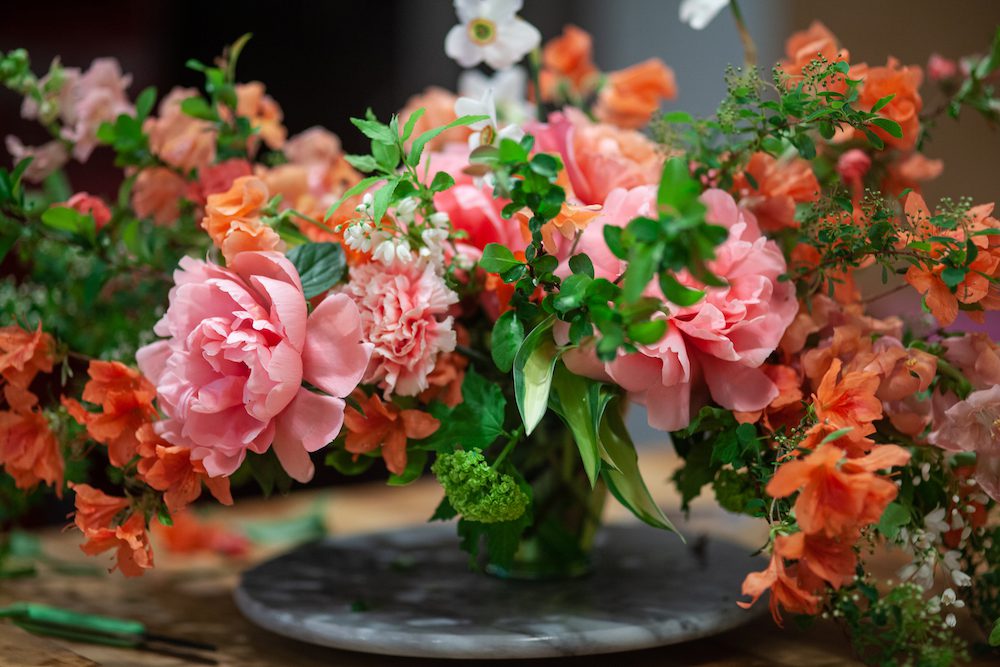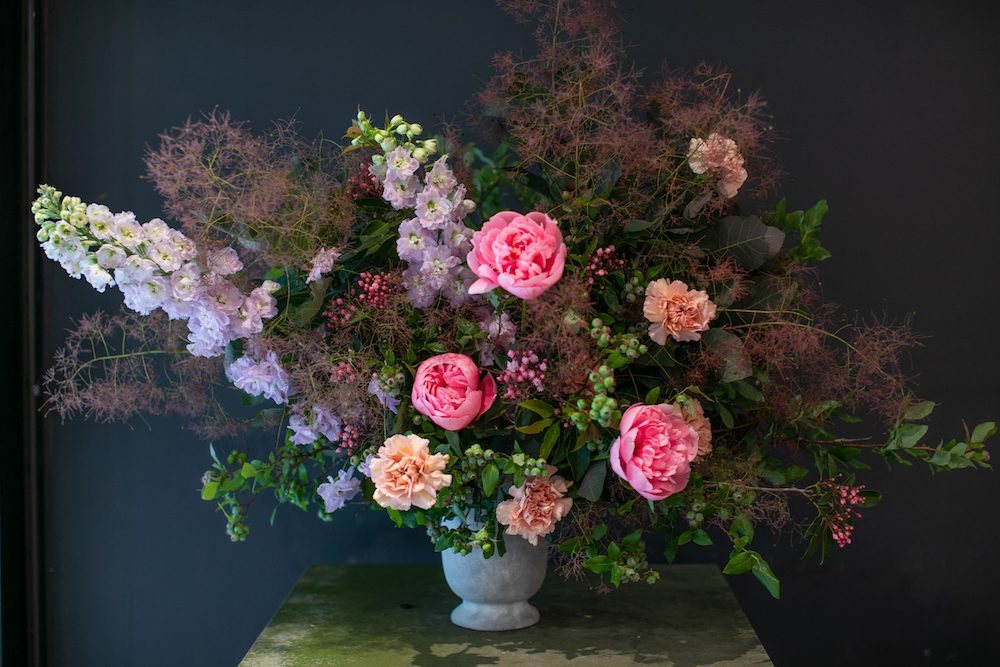The Best Flower Arranging Secrets Revealed in Calvert Crary’s Book
By Jill Brooke

When you think of rock star florists, who comes to mind?
I bet it would be Lewis Miller, Ariella Chezar, Summer Robbins, Ingrid Carozzi of Tin Can Studios, Oscar Mora Remco Van Vliet.
And guess where they studied their craft or taught classes? It was Calvert Crary’s FlowerSchoolNY and FlowerSchool LA.
And now for the first time, Crary, who owned shops before running U.S. floral schools, has written a must-have book for any flower lover called, “Flower School: A Practical Guide to the Art of Flower Arranging.”
The word practical resonates here. Because Crary has been described as what George Balanchine was to ballet, he knows how to teach the fundamentals without being, well, too flowery. He teaches both novices as well as those seeking professional careers.
We think of him as the Dr. Fauci of flowers – accessible, honest and knowledgeable.
You become a scientist in his floral lab where you learn step-by-step all the fundamentals you really need to know.
Plus as a bonus, you get interviews in this book with such greats as Victoria Ahn, Kiana Underwood from Tulipina and Olivier Giugni.

Among the facts, we loved to learn?
Cut from your gardens early in the morning for maximum bloom life “otherwise the stem will think it has been killed,” he writes.
Furthermore, make sure to put the cut flowers from your garden into clean water right away. “Gardens are laden with bacteria,” says Crary. “Blooms cut from the garden can benefit greatly from a hydrating, bacteria-killing solution.”

Another tip that was helpful is that once flowers are conditioned – meaning cutting stems at an angle and disposing of leaves before submerging in water – leave the flowers alone to hydrate for 2-4 hours before attempting to use them in an arrangement.
Flowers dance and move and need to get comfortable in their new homes.
Then think of the limbs of those flowers – whether they will stand up tall or be flexible and pliant. Perhaps the arms of the flowers – those precious petals – will drape over the vase demurely or demand attention for its boldness and color. Crary loves showing all the possibilities in a very easy to follow way.
Also, consider where the flowers originally came from.
“Flowers that bloom in warm climates or during summer months should be given a bath of warm to very warm water with plenty of an antibacterial solution because bacteria grow faster in warm water,” he advises. “Flowers in this category include, but are not limited to, roses, hydrangeas, and hypericum berries.”
Thin soft-stemmed flowers like Calla lilies require “cool water so their stems won’t melt.” Tulips, hyacinths, daffodils, and dahlias are other flowers that like cool water as well.
Great tips right?

Because he’s a great teacher, he divides the book into sections ranging from how to buy the best flowers, conditioning your flowers, pairing the flowers with the right vase and explaining different styles and the rules that apply to each of these desired looks.
The styles are organized by garden design, elevated and graphic and classic.
And there are tutorials in how to think of colors, tones and greenery and how many flowers per vase for maximum effect.
We’ve all heard how “flowers should be one and a half times the height of the vase.” But that is for classic floral designs. Because Crary has a front-row seat to all the modern designs and creative artists in the marketplace, his book is truly an encyclopedia of design, resources and having fun with flowers to brighten your life and others.

Photo Credits: FlowerSchoolNY
Jill Brooke is a former CNN correspondent, Post columnist and editor-in-chief of Avenue and Travel Savvy magazine. She is an author and the editorial director of FPD.
